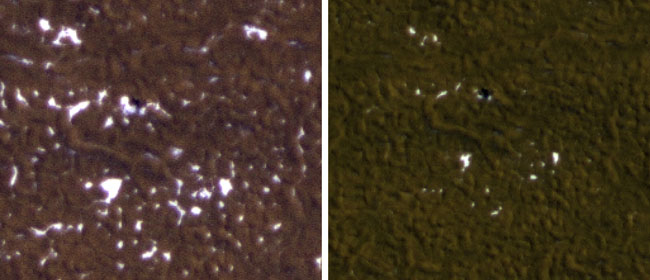NASA Gives Frozen Mars Lander Last Chance to Phone Home

NASA is giving its long-frozen Phoenix Mars Lander one lastchance to send a signal, beep or any sign that it has survived the harshMartian winter with enough of its systems intact to phone home.
From Monday to Friday, NASA's Mars Odyssey orbiter circlingthe red planet will listen for the third time in four months to see if the PhoenixMars Lander has come back to life after experiencing a Martian arcticwinter it was not designed to survive.
The first two listening campaigns by the orbiter, conductedin January and February, didn't hear any signs of life from the lander, whichstudied the surface of the Martian arctic and confirmedthe presence of water ice just below the top surface layer.
Images taken by NASA's Mars Reconnaissance Orbiter inFebruary show the gradual disappearance of surface ice with the onset ofMartian spring.
Phoenix landed on Mars on May 25, 2008, and operatedsuccessfully in the Martian arctic for about two months longer than its plannedthree-month mission. But once the sun and temperatures dropped and winter setin, the spacecraft didn't have enough power to keep going. The lander wentsilent in November 2008.
Phoenix was not designed to withstand the extremely low temperatures and the ice load ofthe Martian arctic winter. But in the unlikely event that the lander'scomponents survived and the spacecraft received enough energy from the risingspring sun, mission managers planned on listening for any signals thatPhoenix was waking itself up.
While Odyssey listens for Phoenix during 60 overflights nextweek, the Phoenix site will be in around-the-clock sunshine, maximizing theamount of sunlight available to the spacecraft's solar panels, should they havesurvived the winter.
Get the Space.com Newsletter
Breaking space news, the latest updates on rocket launches, skywatching events and more!
- Images:Phoenix on Mars, MartianIce
- BestMars Landings of All Time
- SpecialReport: Highlights of the Phoenix Mars Lander Mission
Join our Space Forums to keep talking space on the latest missions, night sky and more! And if you have a news tip, correction or comment, let us know at: community@space.com.

Andrea Thompson is an associate editor at Scientific American, where she covers sustainability, energy and the environment. Prior to that, she was a senior writer covering climate science at Climate Central and a reporter and editor at Live Science, where she primarily covered Earth science and the environment. She holds a graduate degree in science health and environmental reporting from New York University, as well as a bachelor of science and and masters of science in atmospheric chemistry from the Georgia Institute of Technology.